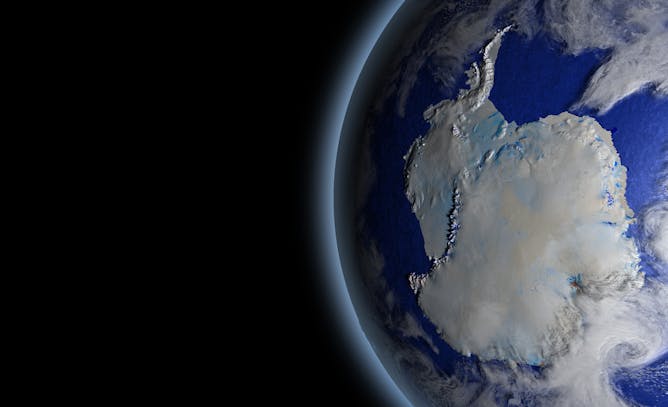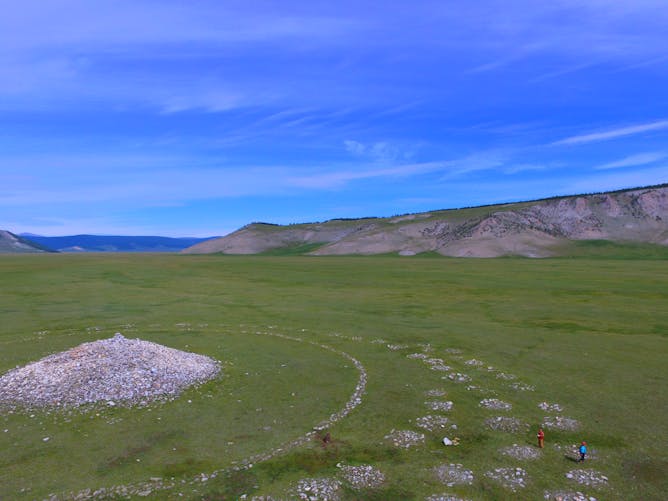|
About 600 miles from the South Pole, near the peak of a mighty ice sheet, lies “Ridge A”, one of the least hospitable places imaginable. Though it is late summer in Antarctica, the temperature on the ridge remains below -50˚C, cold enough to freeze almost all of the moisture out of the atmosphere. But, as astronomer Jacco Van Loon explains, this is exactly what makes Ridge A the best place on Earth from which to stare into space.
Mongolia's rich cultural heritage is under threat - and the world's changing climate is to blame. Deteriorating environmental conditions and a general economic decline have sent people looking for new ways to make money. Julia Kate Clark writes that this sometimes involves selling ancient treasures on the illegal antiquities market.
|

Harvepino / shutterstock
Jacco van Loon, Keele University
'Ridge A' sits at the peak of the Antarctic ice sheet and has exceptionally cold, dry, thin and dark skies.
|

Burial sites may contain treasures, or just old bones. And looters won’t know until they’ve destroyed them.
Julia Kate Clark
Julia Kate Clark, Flinders University
Mongolia's important historical sites are under threat from climate change and looting - and one exacerbates the other.
|
Politics + Society
|
-
Asif Majid, University of Manchester
Whenever Salah scores a goal, he performs sujood, the Islamic act of prostration. Fans' reactions to it underscore the state of British Muslimness today.
-
Elliot Short, University of East Anglia
The revelation that a Bosnian company had broken the arms embargo on Iraq unified three armies which had been fighting each other a decade before.
|
|
Science + Technology
|
-
Jennifer Ruef, University of Oregon
Women's History Month is a time to recognize female role models. In mathematics, when we think of powerful women, we should think of Marion Walter.
-
Matthew H. Holden, The University of Queensland; Alexander Richard Braczkowski, The University of Queensland; Christopher O'Bryan, The University of Queensland; Duan Biggs, Griffith University; Hugh Possingham, The University of Queensland; James Allan, The University of Queensland; James Watson, The University of Queensland
The destruction of a massive haul of illegal ivory was supposed to send a message to poachers and those who trade in the tusks. Did they notice, or can the ivory be used to help elephant conservation?
|
|
Environment + Energy
|
-
Mike Muller, University of the Witwatersrand
Nature based approaches to solving water problems originated in Europe and don't take into account Africa's huge infrastructure deficit.
|
|
Health + Medicine
|
-
Lise Korsten, University of Pretoria
The bacterial pathogen that is responsible for listeriosis can survive under even the toughest conditions.
|
|